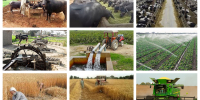
Photo by Airlangga Jati on Unsplash
Shining a spotlight on gender in Indonesia
Gender relations reveal ever-moving fault lines in a society – their complexity demands nuance, care, and a multidimensional lens that puts in focus all the economic and social factors affecting them, Angie Bexley writes.
Understanding gender relations in Indonesia requires one to go beyond simply analysing women’s position in society, or assuming that women are one homogenous category. Over the past 20 years, various social, political and economic forces have shaped relations between genders and how equality is challenged, realised, and restricted in the country.
Interdisciplinary and multidimensional approaches are critical to understand how gender relations are present in all types of institutions. They allow leaders to look at the politics of gender difference and understand anew how power is exercised in the whole of a society. They give them the dexterity to understand the cultural constructs and their countries’ unique expressions of masculinity and femininity.
Indonesia is no exception to this.
In this year’s ANU Indonesia Update, experts from across the region will use this lens to deconstruct patterns of gender relations across four panels, and interrogate the fields of economics, politics, social policy, and art and culture.
Importantly, 20 years since the last Indonesia Update to focus on gender, this year’s conference will take a long-term view of gender equality, its progress and challenges since the beginning of the reform era (reformasi) to the democratic decline of today.
Economic forces have produced uneven outcomes in shaping gender relations. While economic forces have opened up more opportunities for Indonesian women to enter the workforce over the past 20 years, it seems that gender ideology of the New Order regime which enshrined gender roles of women as primarily caregivers and men as breadwinners might not have been completely dismantled.
Economically, this means that a growing proportion of middle class women are not staying in the workforce.
For working class families, however, global migration patterns and availability of work have meant that fathers have had to step into caring roles as women leave their rural homes in search of income.
These particular economic forces have reshaped gender roles. Alternative representations of fatherhood in the domestic realm have started to emerge in cinematic representations of gender relations, for instance. There is progress.
Other marks of progress like gender quotas and gender mainstreaming policies have opened spaces for women to enter politics and the government, but women’s representation has not necessarily brought about gender equality outcomes.
One are to consider is social policy. Assistance programs that consider gender – or ‘jender’, as it is known in Indonesia – are welcome, but in their current form serve to further to inscribe binary notions of gender roles. Again, the role of a woman as a mother and caregiver is assumed, preventing the potential for social policy to promote gender equality, but there are some hopeful developments.
A recent win for gender equality is the sexual violence bill which was finally turned into law by Indonesia’s parliament. This came after decades of advocacy led by Komnas Perempuan – Indonesia’s National Commission on Violence Against Women – and human rights and women’s groups. The law brings a human rights and victim-centred approach to sexual violence cases and providing protection. However contestation to the law remains across the parliament and civil society. And, little surprise, gender is at the heart of these contestations.
Indonesia’s transgender population faces many challenges, including being a moral scapegoat for conservatives to reject reforms such as the sexual violence bill. Other challenges are more fundamental, such as the state’s rejection of recognising transgender identity, which excludes marginalised populations and effectively denies them their full rights as citizens.
Progress towards gender equality and diversity is a complex story everywhere, and Indonesia is no different. But by deconstructing gender relations within the economic, social, and cultural realms and examining how these realms interact, it is possible to understand the challenges and the opportunities for change.
Gender relations are never static nor simplistic, and this year’s Indonesia Update delves into these nuances – both to understand how various factors shape relations between genders, and to discover how policymakers can create the conditions necessary for a more gender equal, diverse and inclusive Indonesia.
This piece is published as part of our new In Focus: Indonesia section, ahead of this year’s ANU Indonesia Update conference.
Updated: 27 July 2024/Responsible Officer: Crawford Engagement/Page Contact: CAP Web Team












